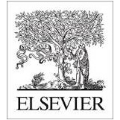This paper considers the integration of gap-based local navigation methods with artificial potential field (APF) methods to derive a local planning module for hierarchical navigation systems that has provable collision-free properties. Given that APF theory applies to idealized robot models, the provable properties are lost when applied to more realistic models. We describe a set of algorithm modifications that correct for these errors and enhance robustness to non-ideal models. Central to the construction of the local planner is the use of sensory-derived local free-space models that detect gaps and use them for the synthesis of the APF. Modifications are given for a nonholonomic robot model. Integration of the local planner, called potential gap, into a hierarchical navigation system provides the local goals and trajectories needed for collision-free navigation through unknown environments. Monte Carlo experiments in benchmark worlds confirm the asserted safety and robustness properties by testing under various robot models.
翻译:本文考虑将基于差距的本地导航方法与人造潜在场域(APF)方法结合起来,为具有可证实的无碰撞特性的等级导航系统制定本地规划模块。鉴于APF理论适用于理想化机器人模型,在应用到更现实的模型时,将丧失可证实的特性。我们描述了一套校正这些错误并增强非理想模型的稳健性的算法修改方法。构建本地规划员的核心是使用感官生成的本地自由空间模型,以探测差距并将其用于合成APF。对非光学机器人模型作了修改。将被称为潜在差距的本地规划师纳入一个等级导航系统,提供了在未知环境中进行无碰撞航行所需的本地目标和轨迹。蒙特卡洛在基准世界的实验通过在各种机器人模型下进行测试,证实了所主张的安全和稳健性特性。




